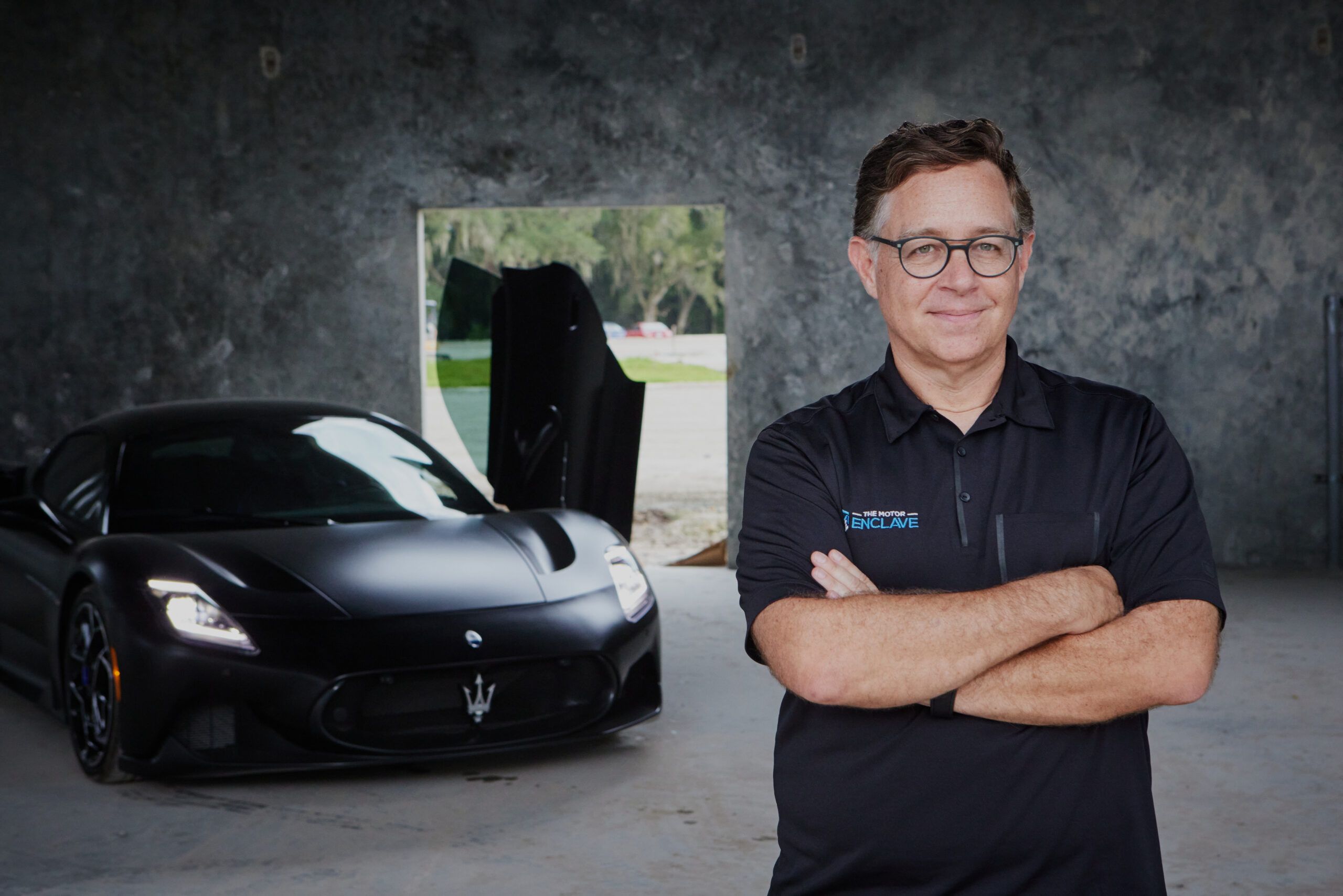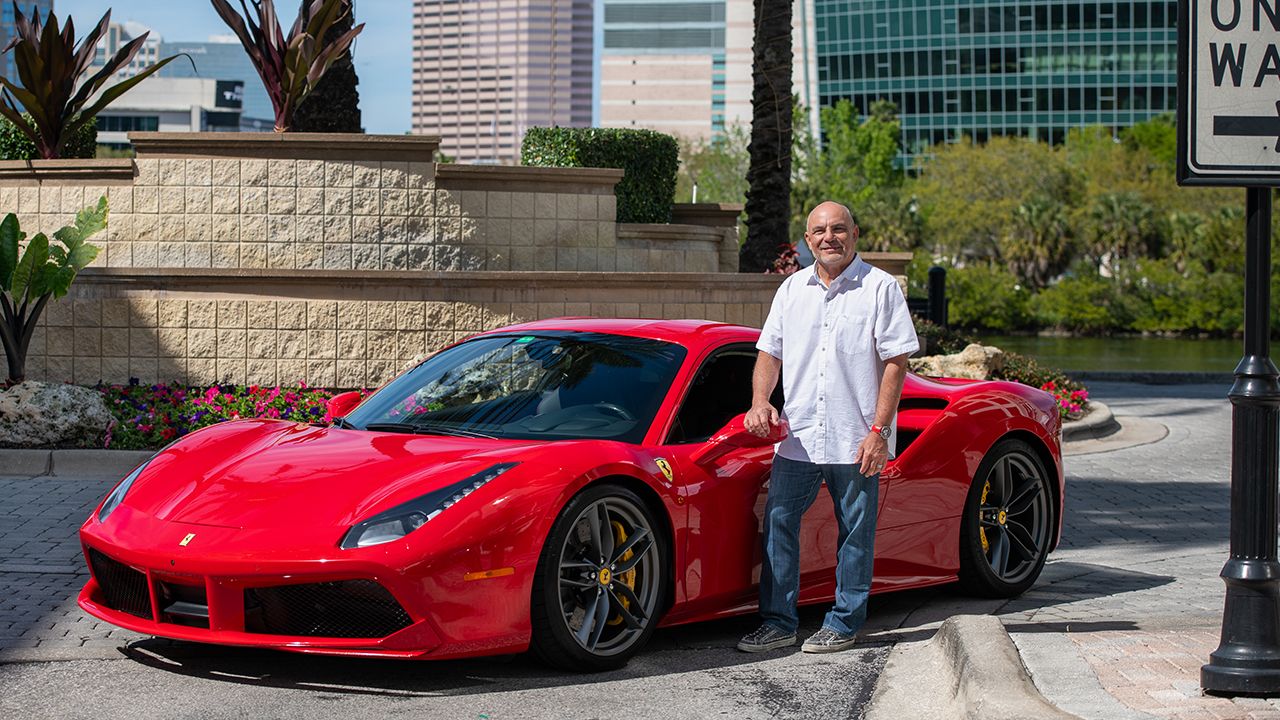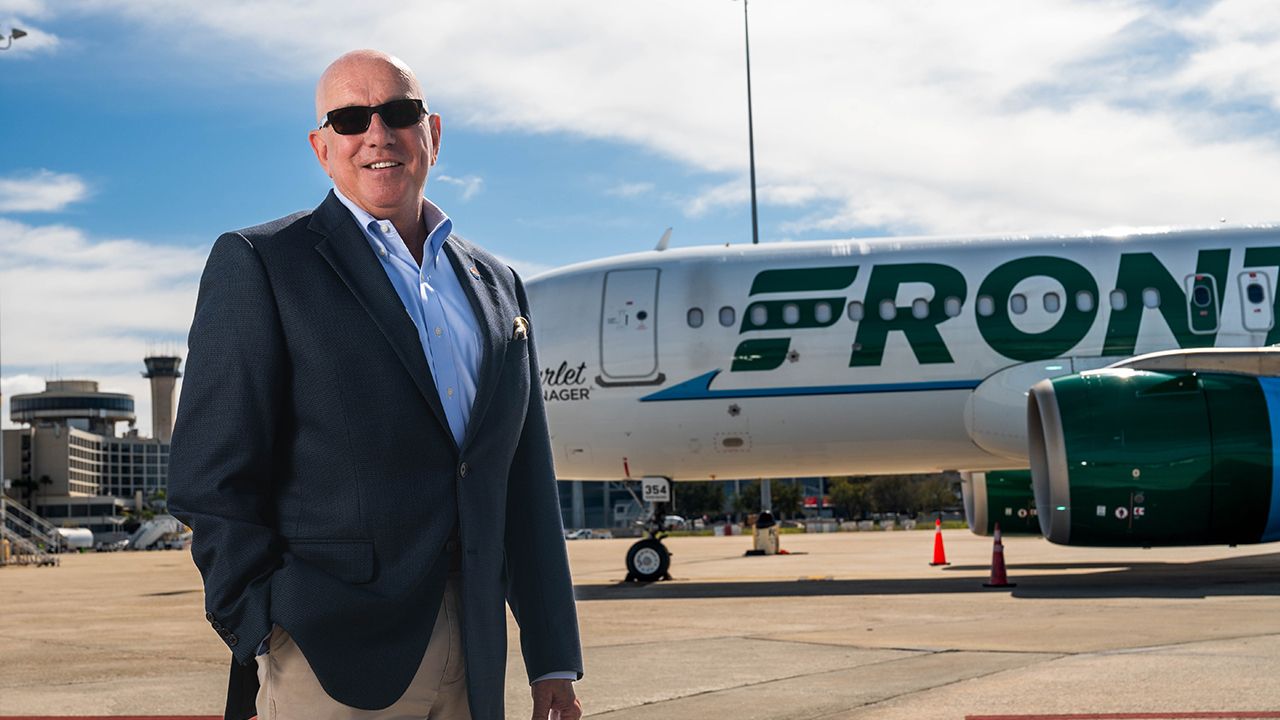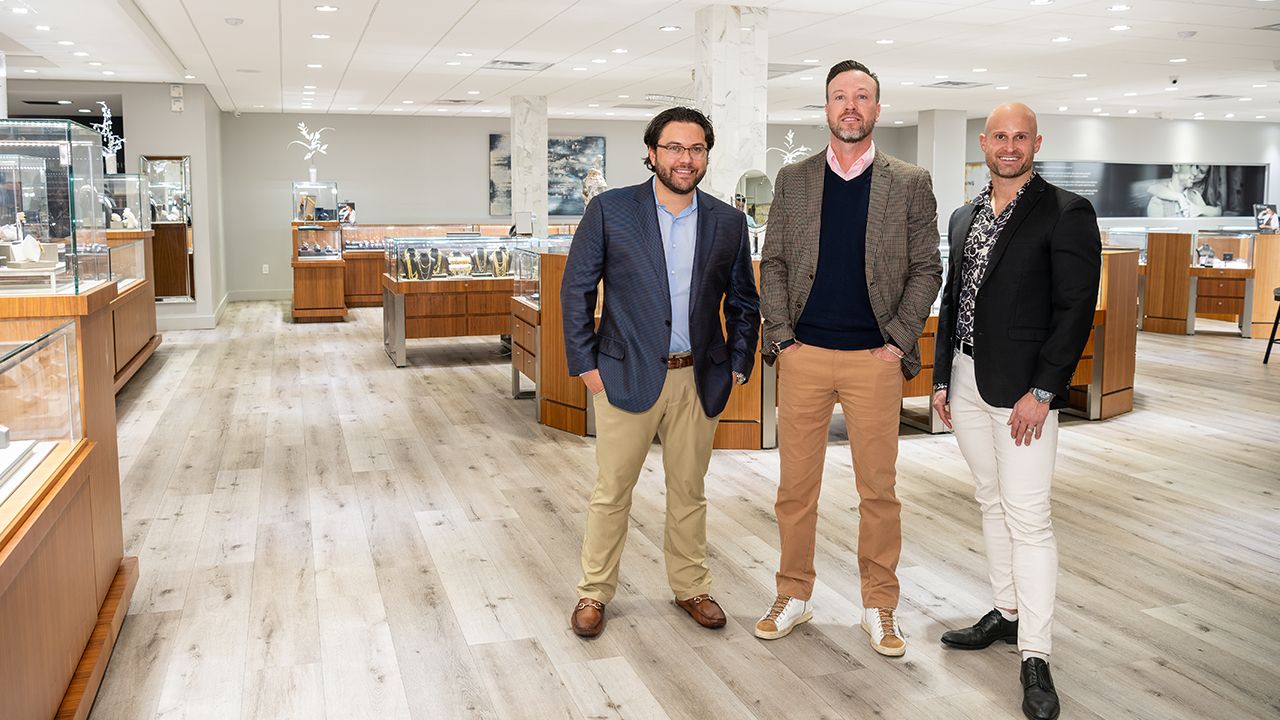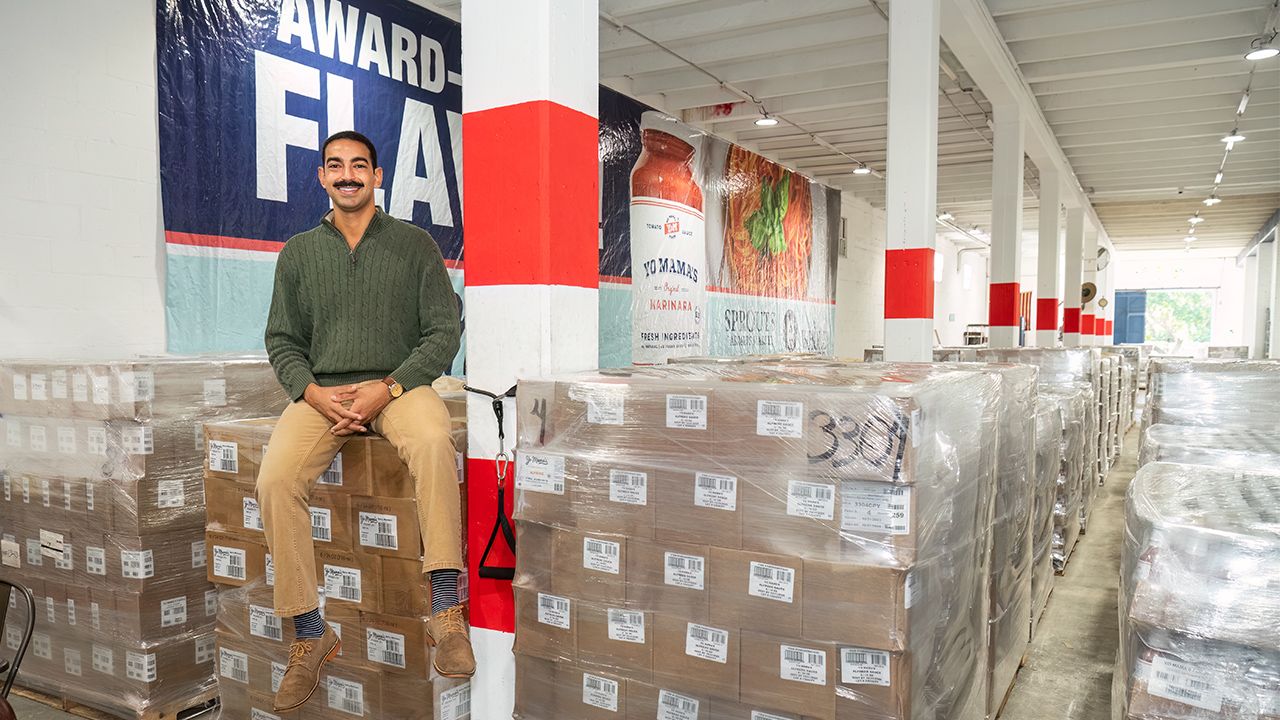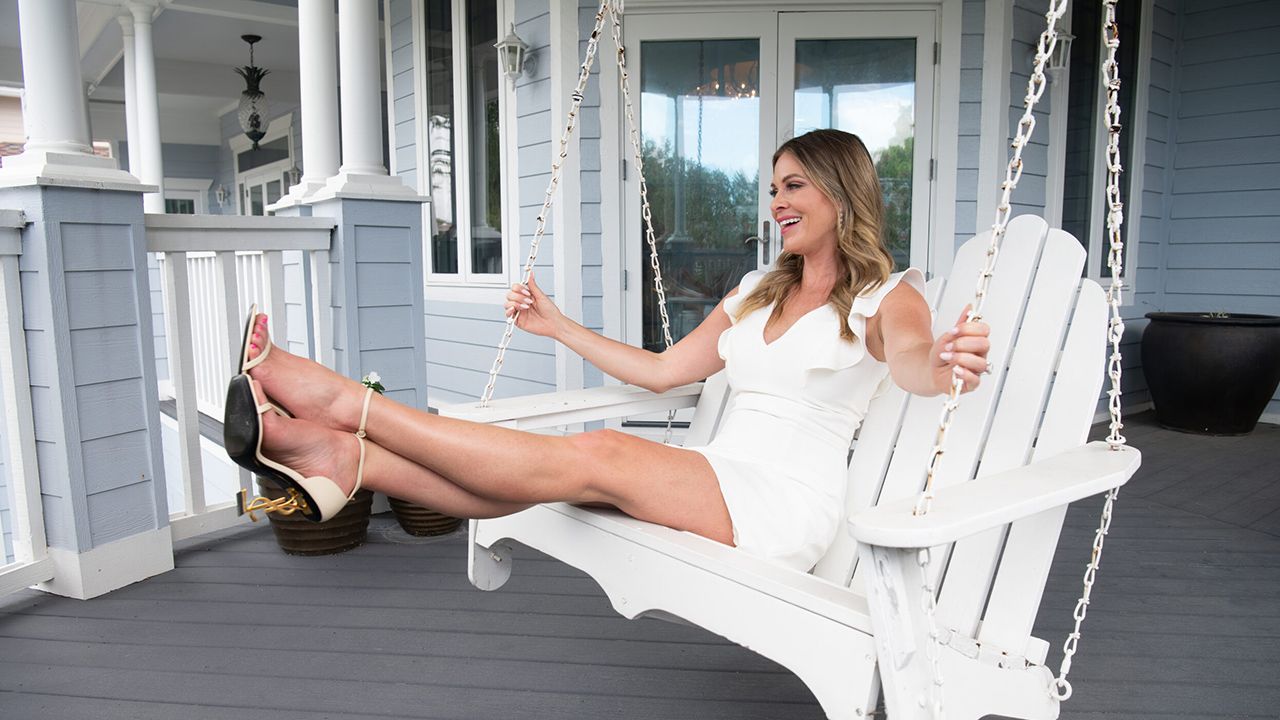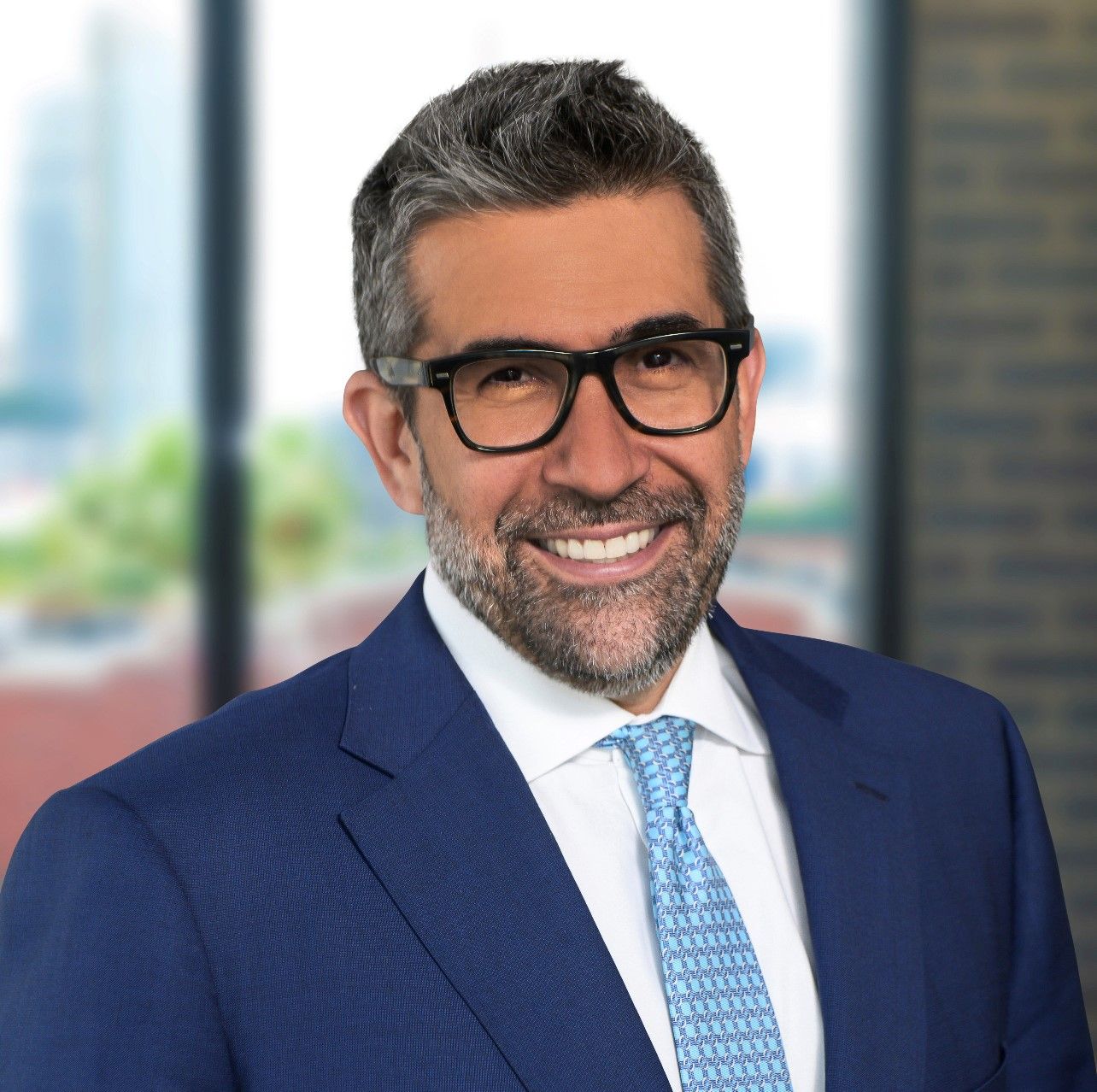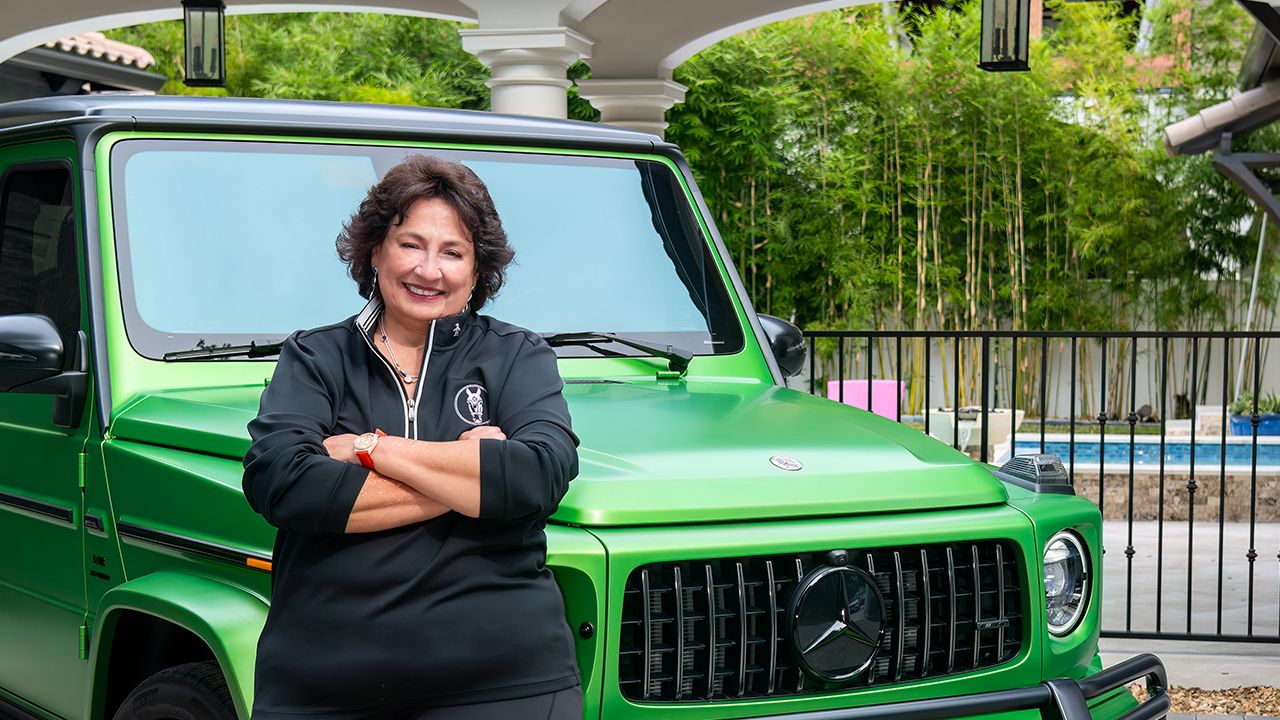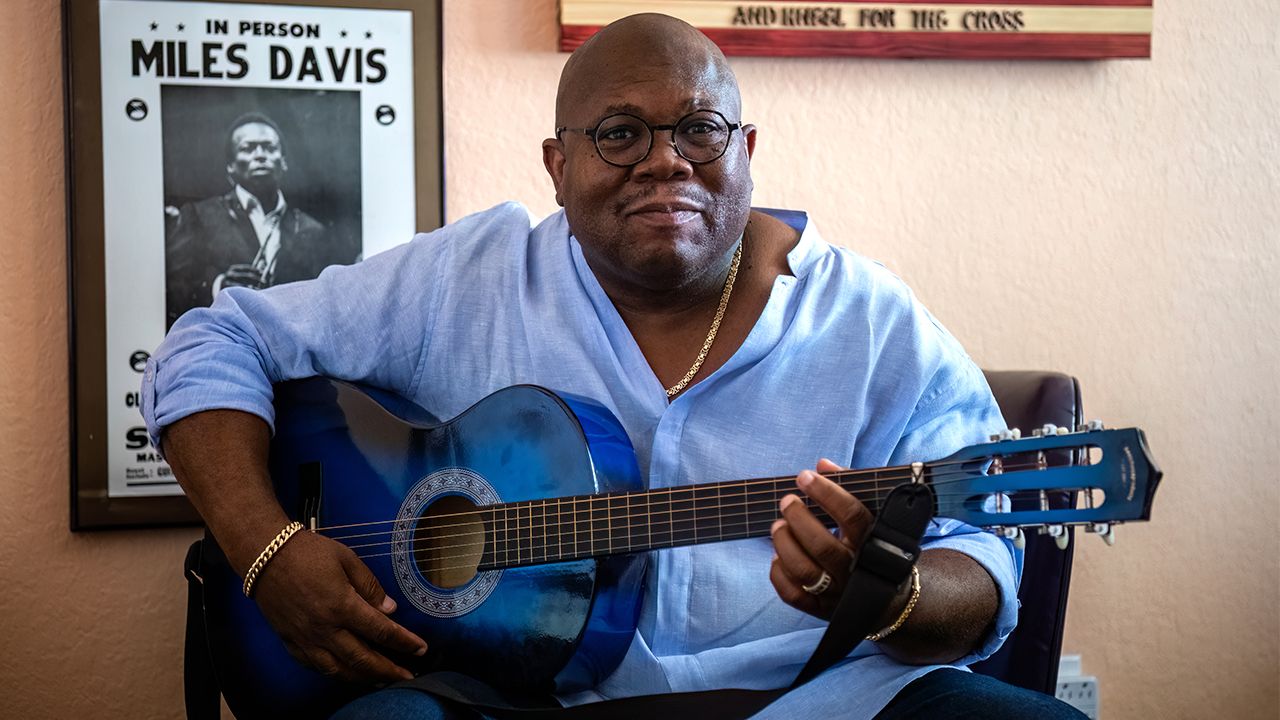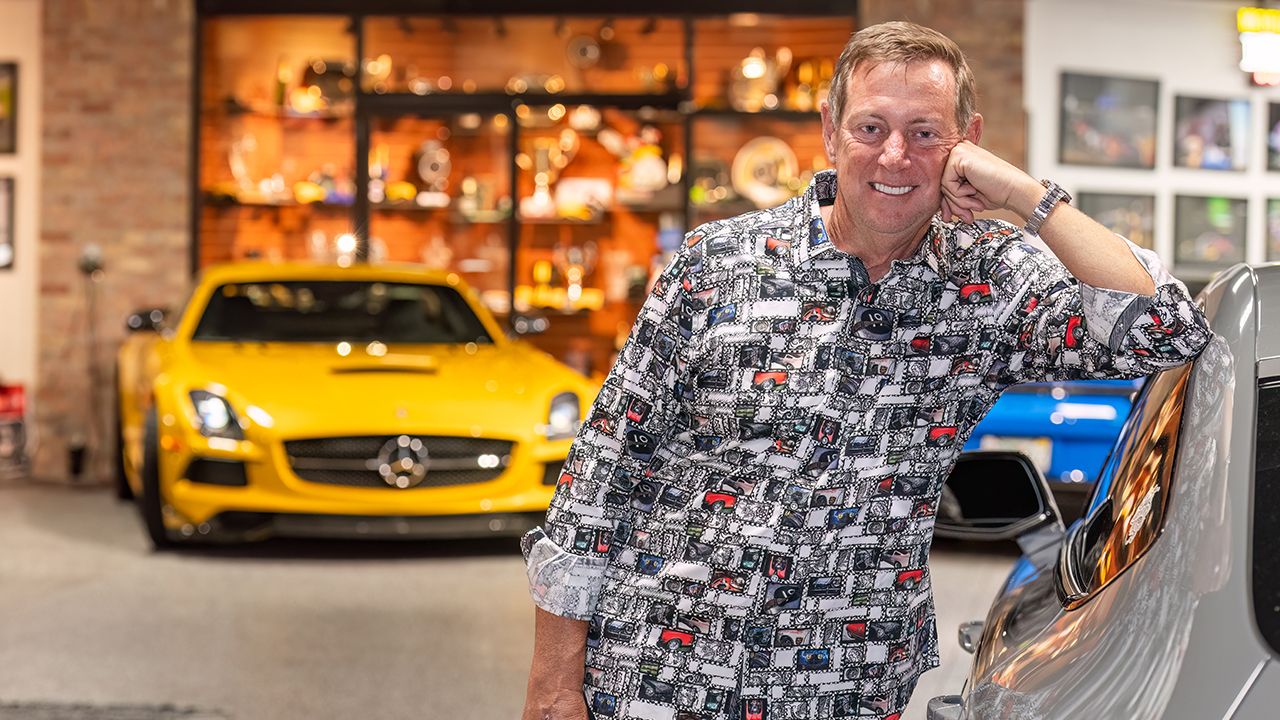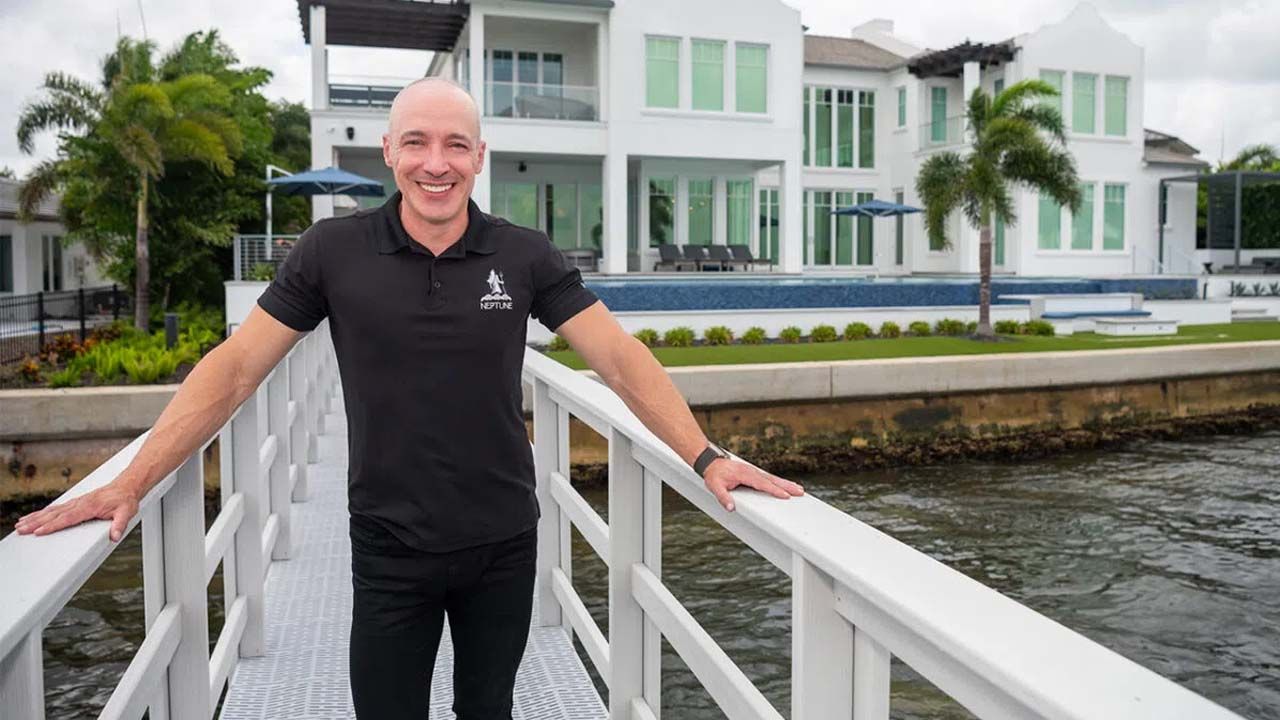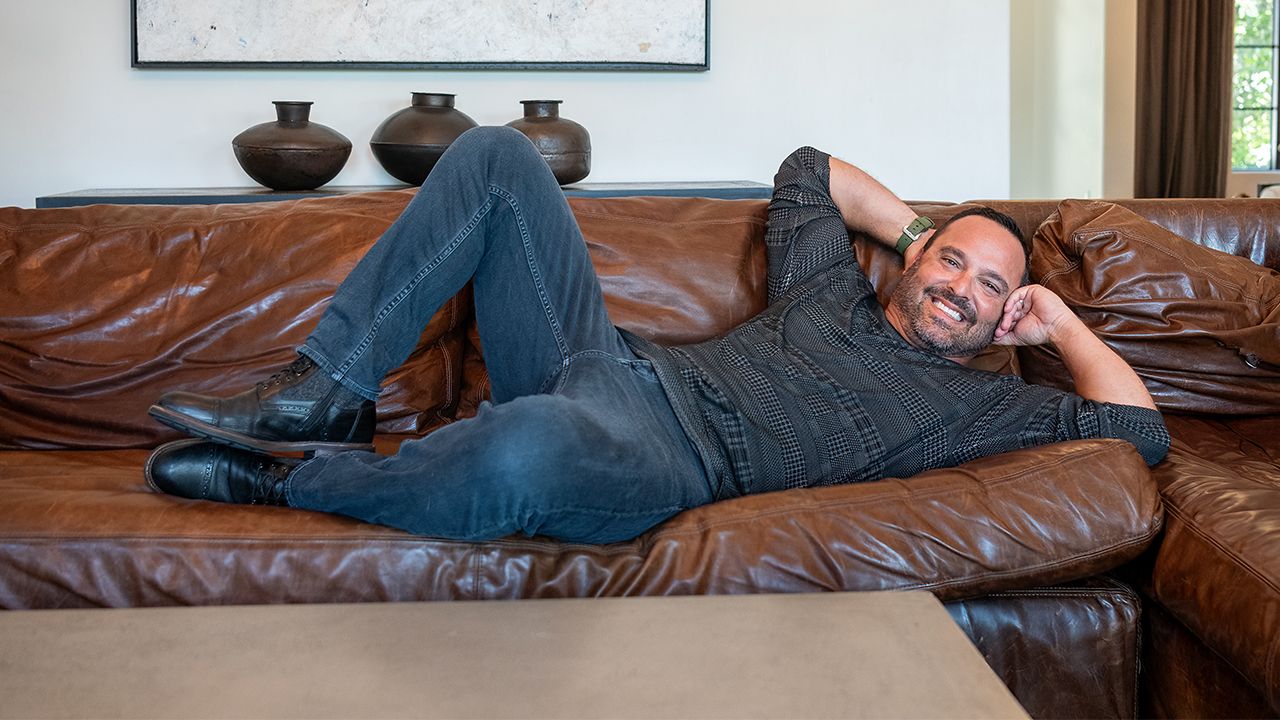Brad Oleshansky has many stories to tell.
He’s had more careers than most. He went to film school, law school, represented Los Angeles rappers in the 1990s, when absolutely nothing was happening in the industry during that time. West Coast versus East Coast. It was a thing.
He worked for Disney and Simon Marketing, which ran the Monopoly promotion for McDonald’s during the scandal in 2000.
A car enthusiast since he was a child, he built his first “experiential automotive destination” in Pontiac, Michigan, called M1 Concourse.
Now, as founder and chief executive officer, he’s building The Motor Enclave in Tampa, a $150 million, 200-acre “playground” for those who share his passion for cars.
With 167 units sold on a preconstruction basis, to date, representing $115 million in sales, it’s expected to be another winning business model for Oleshansky.
He’s also planning to build similar concepts in many cities, including Orlando and Nashville.
It might have taken a long, winding, road to bring him to his latest project in Tampa, which he fondly—and adamantly—calls home now.
Let’s just say, it’s a story.
Motor City to City of Angels
It will shock no one that car enthusiast Oleshansky grew up in, no other than, Detroit, Michigan.
“That’s the reason I am where I am today, because of my childhood with cars,” he says. “My dad was a huge car guy … my whole childhood he was in the garage, building cars.
“When I was young, he always said, ‘If you wash the car, you can drive the car when you’re older,’ ” he recalls.
Driving to get ice cream, visiting car shows … cars were always central to many of the Oleshansky family activities. Not the modern performance cars you might find at The Motor Enclave, but hot rods and classics from the 1920s through 1950s.
His favorite memories growing up were anytime he could ride in his father’s 1923 Model T hot rod.
Oleshansky is the middle child, with two brothers. His father worked in homebuilding and his mother was a teacher and later, a travel agent. He was a good student, involved in student council and the Boy Scouts.
His father encouraged his children to find their own career paths. Meanwhile, the family visited a relative named Neil Rosen in Hollywood, California, a few times on vacation.
“My mom’s cousin was a prominent screenwriter. In addition to managing the Smothers Brothers and Barbara Mandrell, he wrote for shows like Welcome Back, Kotter; Too Close for Comfort and the Ted Knight Show,” Oleshansky says.
It was then that he got the Hollywood itch. He attended a summer filmmaking program at the University of California at Los Angeles.
“That solidified that I wanted to go to film school, for college,” he says.
He attended Ithaca College, in upstate New York, where he studied film production.
“I moved to L.A. in 1992, thinking I was going to make movies and quickly realized that it’s very hard to get a job in the film industry because there are so many other young people trying to do the same thing,” he says. “Instead, I made a lot of coffee.”
One thing he noticed was that a lot of people he met, and spoke with, were also lawyers or had lawyers. The entertainment industry was filled with them.
“I kept asking, why is everyone a lawyer here?” he says with a laugh. “If you asked me in college if I was going to go to law school, I would say you were out of your mind.”
“I talked to my cousin, who was in the industry, and I asked him, ‘What’s the deal with all of the lawyers?’ ”
He explained that the whole entertainment industry was contractually based, meaning everything done in Hollywood has a contract. Long contracts, filled with jargon and terms the average person doesn’t understand.
Oleshansky attended Southwestern University School of Law, in Los Angeles, famous for having the largest entertainment law curriculum in the country. The school provided students with internships within the entertainment industry. This is how Oleshansky landed his first real “gig” on the legal team at Disney, where he worked for two years.
“The interesting thing about law school, for me, is I actually enjoyed it. Everybody hates law school,” he says. “I loved the challenge of it. I loved the learning process.”
Shifting Gears
After law school, he transitioned to a job at the Beverly Hills law firm of Lowy & Zucker.
“I never thought I would work at a law firm. But everyone kept saying to get a law firm on your résumé for, at least, a couple of years just to be safe, in case you ever wanted to fall back on it,” he says.
As an entertainment lawyer, he did some work for Death Row Records which, at the time, was led by Suge Night with artists like Dr. Dre, Snoop Dogg and Tupac Shukur. He also represented the families of jazz and blues legends, such as Bill Evans and Muddy Waters.
The work that meant the most to him, during this time, was being able to track down bootleggers of deceased musicians and being able to give the rights, and money, back to their families.
“Chet Baker is one of the most famous trumpet players ever. When we started with his family, his widow was getting paid royalties on only a handful of the 100-plus Chet Baker albums on the market,” he recalls. “And one year later, after the efforts of myself and another attorney that were, basically, going after bootleggers, she was receiving significant income from royalties and new album releases. It changed her whole family’s life.”
From there, he ended up working as in-house counsel for a company called Equity Marketing in Beverly Hills, which made the toys found in Burger King’s Kid’s Meals.
“It was an opportunity to learn more about licensing and branding and corporate law because it was a public company,” he says, adding that it was a rather mundane corporate experience. Certainly, less exciting than the likes of Death Row Records.
From there, Oleshansky became associate general counsel for Simon Marketing, one of McDonald’s largest marketing agencies. In addition to producing more than 1 billion Happy Meal toys a year, the company ran games and sweepstakes for McDonald’s.
Missing Pieces
It’s one of Oleshansky’s more colorful stories and one you can learn more about if you watch the documentary McMillion’s, released in 2020.
When Oleshansky took the job at Simon Marketing, his salary doubled and his lifestyle changed greatly.
“Fancy offices, private chefs and private jets,” he says. “This was 1999.”
During this time, Oleshansky bought his first house and was unpacking boxes when he received a call from the company’s CEO, asking him to come into the office, now.
“I get to the office and he tells me McDonald’s has fired us,” he recalls. “He tells me to turn the TV on in a half-hour.”
A half-hour later, there was a nationally televised news conference, revealing to the world that a Simon Marketing employee had been committing fraud with the Monopoly game pieces. While the FBI knew it was the work of one employee, the damage to Simon was done and virtually every client terminated their relationships with the company.
Oleshansky was one of a handful of employees retained to wind the business down. He calls it the “learning experience of a lifetime.” He stayed on for about a year, before he moved on to the next big thing, this time at Sony Pictures Entertainment, specifically the Game Show Network.
Around the Track
By this time, Oleshansky had married and welcomed twins in 2000.
“I was like, I never want to live back in Michigan. Michigan is great. But there’s nothing going on there. Right?” he says. “And I was home for Thanksgiving in 2003. I met a husband and wife who had this little business called Big Communications and they were doing interactive work that was really, basic training videos and programs for automotive and other industries.”
At the time, they had just broken into the pharmaceutical space doing content development and salesforce training programs.
“So, our premise was could we use technology to create dynamic presentations for drug reps to go to doctor’s offices and deliver a medically relevant presentation. We came up with the idea to use iPads to deliver a very engaging presentation. All the reps had to do was press play, and look pretty, and engage the doctor,” he says. “That became a huge business. We grew that business from zero to $50 million in revenue and sold it, in 2008, right before the crash.”
“Disney” for Car Lovers
Oleshansky had, at least, two successful careers at this point. One of the benefits of that success was the freedom, and means, to travel. Which he did.
During his travels, being a car enthusiast already, he made mental notes of race tracks, museums and car storage businesses, which he sees as a “passion business,” he says.
“Passion businesses, 99% of the time, are created by a wealthy person who wants to create the best version of something, like I want to build the greatest golf course ever or I want to build the best cigar lounge … and they lose their ass because they don’t run it like a business. They run it like a hobby,” he says. “I’m not the kind of person that wants to blow money just to show my friends that I own something cool. So, I had to figure out how to create a business in the automotive ‘passion’ space that could actually be a viable business.”
What he discovered was the car storage business was a huge opportunity. It was already a viable business model in Europe because, in a lot of places there, most people don’t have garages. If you have more than one car, you need a place to store the others. This was the birthplace of “car condos” or “private garages.”
“While doing my due diligence, I discovered that someone had built a car condo project in Minneapolis called AutoMotorPlex,” he says. “This guy did this in Minneapolis where there’s like, no cars. I had the data that said that Minneapolis had, and this is in 2012, like 6,000 registered classic, exotic and muscle cars … in Detroit, there were 65,000.”
That’s when he started working on his first automotive experience project, M1 Concourse. Since its launch, the private garage community has grown into the largest community of private garages in the world (more than 250 units) and the premiere destination for auto-inspired events. It’s the framework of what Oleshansky is bringing to Tampa and other Motor Enclave projects around the country.
Tampa appealed to him, thanks to its lifestyle and community.
“People are so friendly here,” he says.
Oleshansky, now divorced, lives in a chic bachelor pad in a high rise, near Amalie Arena. And, after working for some of the sexiest corporations in some of the coolest cities in the United States, seems extremely content to call Tampa his home and the progress of his “passion” project.
“Everyone thinks it’s like a playground for rich people,” he says adding, it’s so much more than that. “We make people that are helping other people incredibly happy, thankful and appreciative. They channel their efforts into philanthropy and other things that they’ve never thought of, because, for once in their life, they’re actually doing something fun for themselves … they get the privacy, community and camaraderie. That’s the secret sauce of what we’re doing.
“My customers, they say, ‘Oh, I always dreamed of having a Ferrari but I would never drive it around town for fear of my employees seeing me driving it.’ Or, ‘My wife wouldn’t let me buy a McLaren because I’m going to drive it on the street [and] kill myself,’” he says. ♦
Oleshansky On Philanthropy
Oleshansky’s philanthropic passions are, largely, focused on causes important to the Jewish community and inner-city education and mentoring. He is on the board of a charity called ORT, which helps build nondenominational schools throughout the world.
“We have built schools in areas where kids can’t get an education because of religious persecution or social issues,” he says.
He’s also spearheaded holiday meal drives and rebuilt parks in neighborhoods in, and around, M1 Concourse in Pontiac, Michigan.
“I like to try to make it so people don’t just write checks, but also show up and do stuff,” he says. “Put some sweat into it.”
Photos by Michael McCoy[image_slider_no_space on_click=”prettyphoto” height=”300″ images=”20621,20620,20619,20617,20618,20616″]



